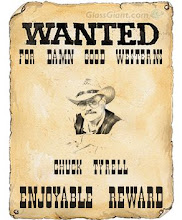
The Pedersoli Sharps rifle. Sharps was the quintessential buffalo gun. Christian Sharps's first breech-loading rifle came out in the late 1840s. The British government kept him in business with an order for several thousands of the rifle in the 1850s. By this time, the rifle was a favorite in the west as well. Civil War sharpshooters preferred Sharps weapons, mainly model 1859. America's buffalo herds rued the day the big Sharps .50 was produced, for it, along with the Remington rolling block rifle, was the main cause of the animal's near extinction. Sharps Big Fifty was accurate to at least 1,000 yards.

Remington rolling block rifles, although single-shot breechloaders, became one of the most popular rifles in the westward movement. They were also used abroad by the armed forces of Denmark, Sweden, Spain, Mexico, Egypt, and others. Of course the U.S. Navy, Army, and several state militias used the rifles as well. The Remingtons were simple, reliable, and came in several calibers. One famous story about Remingtons is the cattle drive from Texas to Montana, ramrodded by Nelson Story. Somewhere between Fort Laramie and Fort Reno, a band of Sioux ran off some of the cattle. Story had a case of Remington rolling block, which were among the first in the West at the time. He broke the guns out, distributed them to the drovers, and set out to get his beef back. The Indians stopped at what they felt was a safe distance and butchered one of the cattle. Story found them there, outgunned them with the Remingtons, and retrieved all his cattle but the butchered one.

The first famous Winchester repeating rifle was the Yellow Boy, model 1866, with a bronze gunmetal receiver. It used .44-40 rimfire cartridges.
To back up for a minute, the first sort-of cartridge was patented by Walter Hunt in 1848. It consisted of a conical lead ball filled with powder and sealed with a primer disk. The ammunition was produced in Norwich, Connecticutt by Horace Smith and Daniel Wesson (Smith & Wesson), but the Volcanic ammunition didn't catch on.
Volcanic Repeating Arms Co. was founded in 1855. One of its investors was Oliver Winchester. Two years later, the company failed, and Winchester took over, taking the Volcanic patents to the New Haven Arms Co. New Haven produced the Henry repeater in 1860, which fired a .44 caliber rimfire cartridge. This is the gun that the Southerners said could be loaded on Sunday and fired the rest of the week.
The first Winchester came after the company changed its name to Winchester Repeating Arms Co., the famed Yellow Boy model 1866, which also used rimfire .44 cartridges.

The next big innovation came in 1873. Winchester model 1873, most often just called Winchester '73, starred in the movie of the same name, along with co-star James Stewart. All the guns were factory fired, and the most accurate were inscribed with One in a Thousand on the receiver. They would cost $100 where the run-of-the-mill '73 could be had for $20. But some thought the price well worth it. One in a Hundred Winchester '73 rifles sold for $40.
With the 1873 Winchester came the centerfire cartridge in .44-40. The final tally shows that 720,610 Model 1873 Winchesters were made and sold.

This is great stuff, Charlie. My own models of these weapons were made by Mattel (they're swell), so it's nice to get the poop on the real thing.
ReplyDeleteI'm trying to dig up info on knives. Any suggestions?
ReplyDeleteThe Bowie Knife by Norm Flayderman is packed with beautiful full page color photos of vintage Bowie knives, plus in-depth discussion of their use from the 1830s and into the Wild West. The bad news is the book runs about $80 - but it's actually worth it.
ReplyDelete
ReplyDeleteThank you, your article is very good
viagra asli
jual viagra
toko viagra
toko viagra asli
jual viagra asli
viagra jakarta
viagra asli jakarta
toko viagra jakarta
jual viagra jakarta
agen viagra jakarta
agen viagra
cialis asli
cialis jakarta
cialis asli jakarta
titan gel asli
titan gel jakarta
titan gel asli jakarta
viagra cod jakarta
obat viagra jakarta
obat viagra asli
viagra usa
viagra original
obat viagra
obat kuat viagra
jual cialis
toko cialis
obat cialis
obat cialis asli
obat kuat cialis
obat cialis jakarta
toko cialis jakarta
jual cialis jakarta
agen cialis jakarta
toko titan gel
jual titan gel
vitamale asli
permen soloco asli
maxman asli
hammer of thor
vimax asli
viagra
titan gel
hammer of thor asli